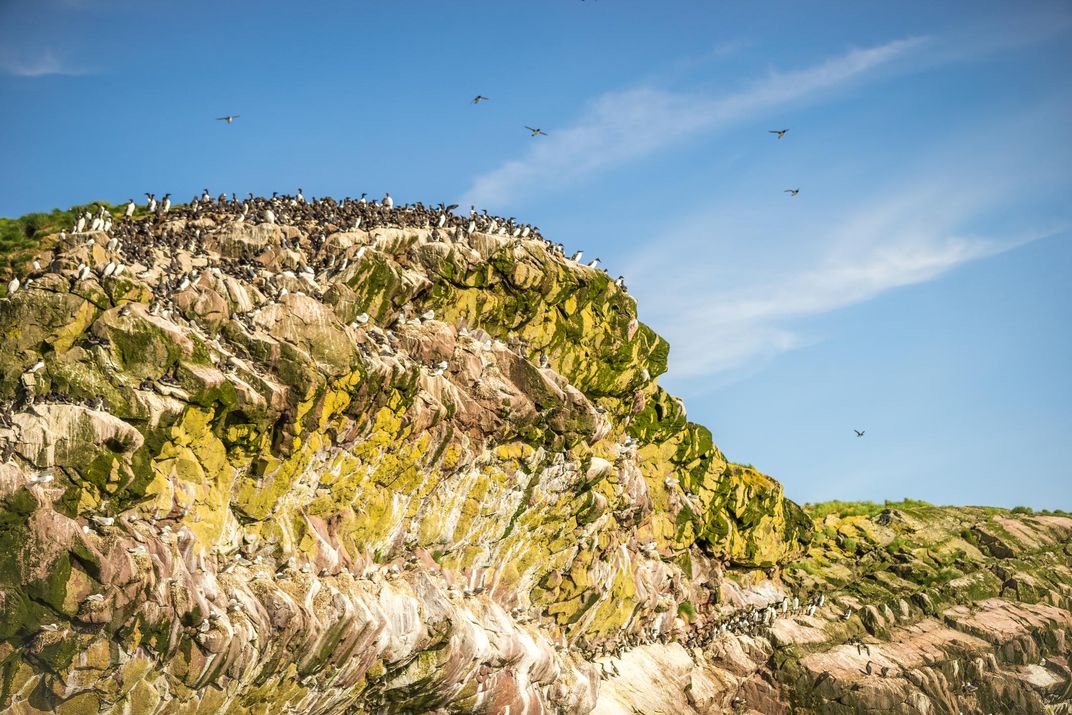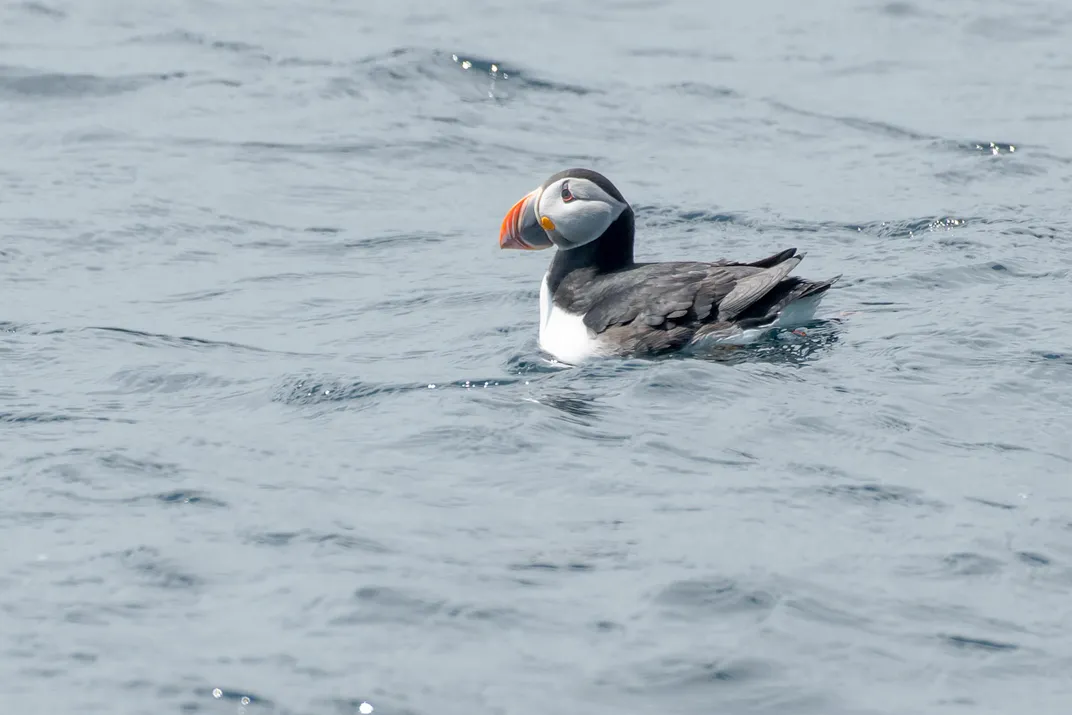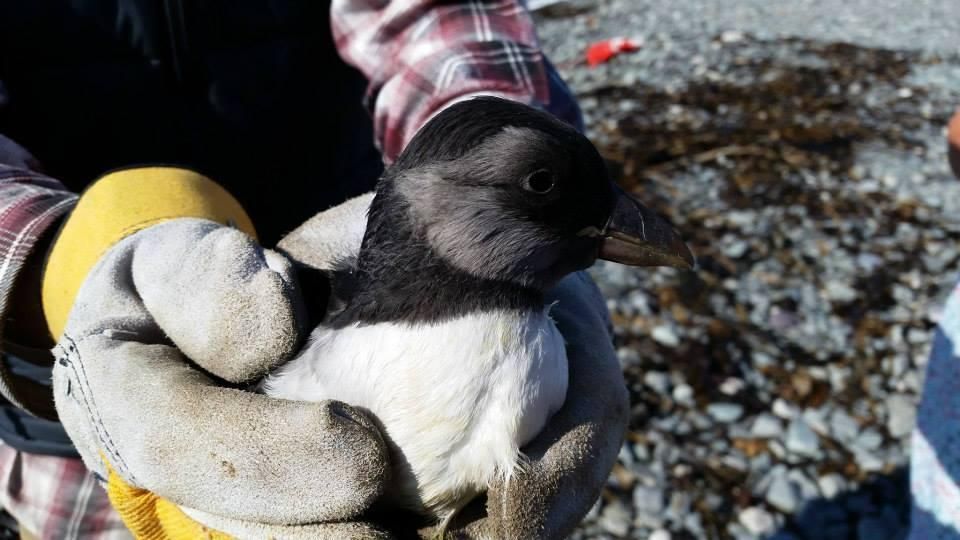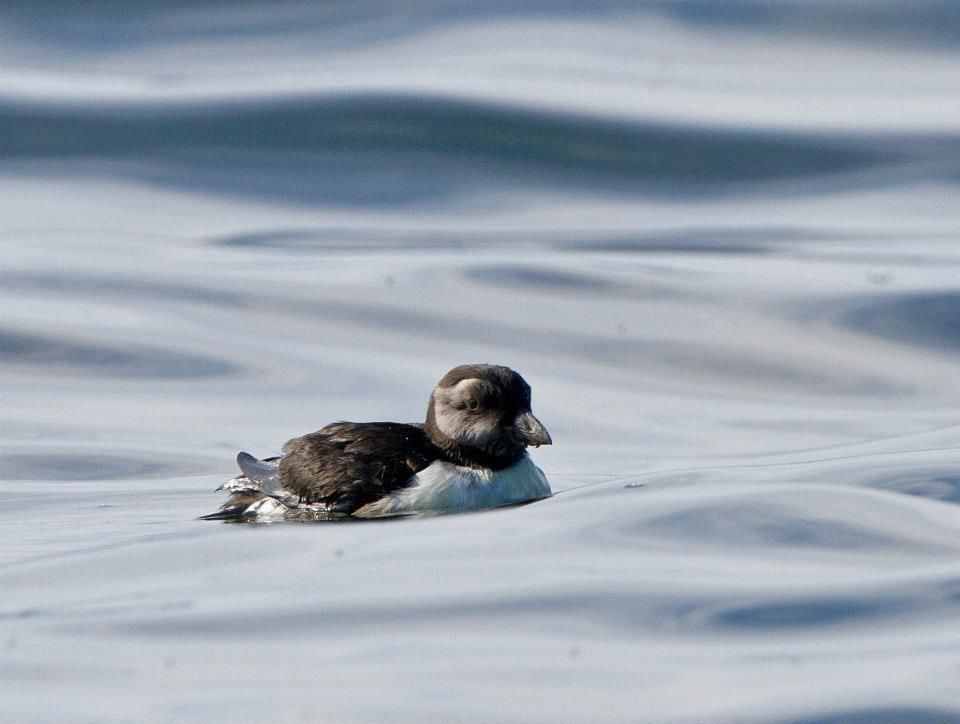Newfoundland’s Volunteer Puffin Patrol Helps Save Hundreds of Baby Seabirds Confused by Light Pollution
Baby birds leaving the nest for the first time sometimes confuse urban lights for the moon and stars as they try and head out to sea from Witless Bay
Spotting an Atlantic Puffin or Leach’s Storm-Petrel along the shores of Witless Bay, a town in the Canadian province of Newfoundland and Labrador, is a common occurrence during the warmer months of the year. The coastal environment is a popular breeding ground for these seabirds, and every August more than 500,000 breeding pairs of the two species begin their annual migration south for the winter. Although the adult birds have grown accustomed to using the moon and stars for navigation, the increase in light pollution coming from St. John’s, a city 20 miles to the north, along with other towns situated on the Avalon Peninsula, has proven detrimental to puffin and petrel chicks, causing them to fly towards civilization rather than out to sea. Over the years it has become increasingly common to see a chick stranded by the roadside. Fortunately there is a team of volunteers ready to help.
Armed with nets and boxes, the Canadian Parks and Wilderness Society (CPAWS), along with a team of volunteers, ventures out along the roads and shoreline of Witless Bay every night from August to October. Their mission: to find and rescue stranded chicks that would otherwise meet their demise.
Witless Bay has long been an important breeding ground for puffins and petrels, with about 300,000 Atlantic Puffin breeding pairs (the largest colony in North America) and about 200,000 Leach’s Storm-Petrel breeding pairs (the second largest colony in the world) nesting there each spring and summer. Both species dig burrows to use as nests and each pair lay a single egg, which both parents help incubate. Once hatched, the chicks leave their nests at nightfall to help avoid being caught by predators.
CPAWS has been spearheading the Puffin and Petrel Patrol for nearly a decade, taking over the reigns from Juergen and Elfie Schau, a German couple who began noticing the grounded chicks while vacationing in the area each summer. The Schaus did their best to save as many birds as possible, but soon realized they needed more hands to make an impact. So in 2006 they recruited local schoolchildren to help. Eventually their efforts outgrew the Schau’s garage, and in 2011 CPAWS stepped in.
Today hundreds of volunteers from around the world flock to Witless Bay to take part in the patrol. Kathy Unger, conservation coordinator with CPAWS, estimates that in 2017 about 300 volunteers showed up to help. Together they saved 730 puffins and several hundred petrels.
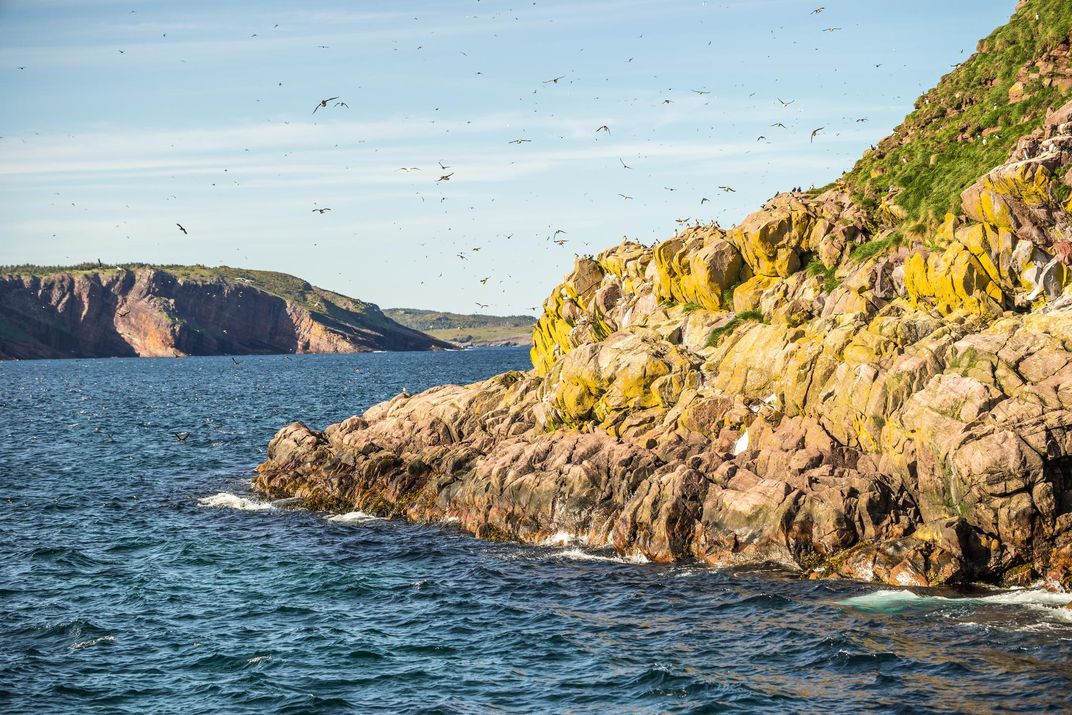
“That doesn’t sounds like a lot, but it really is,” Unger tells Smithsonian.com. “Since 2006, the program has been growing and growing. CPAWS originally got involved to help facilitate the program and make it a little more robust. [Today the program] involves local businesses like whale watching companies that voluntarily let us use their boats to take the puffins out on releases. We have people from around the world emailing us about [how to get involved]. We also work with seabird biologists from the Canadian Wildlife Service who measure and tag the birds before release.”
Unger says that the two departments are working together to get a better idea of where exactly the birds are traveling to, and hope that they’ll eventually see birds return with the metal numbered tags attached during spring migration. Unfortunately, up until now, they have yet to see a single returning tag.
“We’re talking about 300,000 breeding pairs of puffins, so it’s like finding a needle in a haystack,” she says. “We don’t know for sure how these birds are doing, because we just haven’t found them again. We don’t have GPS tags to see where they’re going, and that’s simply because this is a grassroots project, and we can’t contribute the funds to buy the equipment to do so.”
Even though Unger and her team haven't seen specific returning birds, she does say that their efforts have been confirmed in other ways, such as raising awareness about the affect of light pollution on migratory seabirds.
“We’re not unique here in Witless Bay with this problem, this is a case of habitat improvement to reduce light pollution,” she says. “We’re working with [the local electric company] to ensure that street lighting in that area is less disruptive, and we're also going to local residences and businesses and changing out their light bulbs from really bright colored bulbs to green or blue, along with adding light shields. It really makes a big difference. Studies have been done in other areas that show that [these changes] reduce strandings. For the last several years there has been more awareness and people are coming to me and asking what they can do. If people don’t help, these birds don’t have a chance.”
Planning Your Next Trip?
Explore great travel deals
Smithsonian magazine participates in affiliate link advertising programs. If you purchase an item through these links, we receive a commission.
